-
Weekly Reading
›In Poverty: Combating the Global Crisis, a paper for the Better World Campaign, Wilson Center Senior Scholar John Sewell urges the next U.S. president to focus on promoting open political and economic systems; universal education; better health systems and disease prevention; and equitable trade liberalization in order to reduce poverty.
“Somebody recently said water’s the new oil and there’s a lot to be said for that,” Tad Davis, the Army’s deputy assistant secretary for environment, safety, and occupational health, told Reuters. “If we don’t have water, then we don’t have the ability to perform,” said Davis.
Scientists attending the World Conservation Congress in Barcelona this week released The World’s Protected Areas, a book that examines past progress and continuing challenges in the struggle to protect some of the world’s most biodiverse places.
An Encyclopedia of Earth article examines the important role of forest-derived environmental income in the lives of the rural poor in developing countries. -
PODCAST – Sharing the Forest: Protecting Gorillas and Helping Families in Uganda
›October 9, 2008 // By Wilson Center Staff<href=”https://d3i11i4ld2ygwb.cloudfront.net/uploads/2012/07/Kalema-Zikusoka1.png”>
 Gladys Kalema-Zikusoka is founder and CEO of Conservation Through Public Health (CTPH), an NGO that seeks to save the endangered mountain gorillas of Uganda’s Bwindi Impenetrable National Park and improve the health and livelihoods of people living on the outskirts of Bwindi. Close proximity of humans and gorillas has resulted in the transfer of a number of diseases, including tuberculosis and scabies. In this podcast, Kalema-Zikusoka describes CTPH’s success providing integrated health services, educating people about family planning methods, reducing human–wildlife conflict, and improving local livelihoods. In “Sharing the Forest: Protecting Gorillas and Helping Families in Uganda,” the latest issue in ECSP’s Focus series, Kalema-Zikusoka and coauthor Lynne Gaffikan write that “members of these communities have the potential to serve as model stewards of the country’s natural resource wealth”–if their health needs are met and livelihoods improved. Kalema-Zikusoka recently spoke at the Wilson Center on human, animal, and ecosystem health and population-health-environment lessons from East Africa.
Gladys Kalema-Zikusoka is founder and CEO of Conservation Through Public Health (CTPH), an NGO that seeks to save the endangered mountain gorillas of Uganda’s Bwindi Impenetrable National Park and improve the health and livelihoods of people living on the outskirts of Bwindi. Close proximity of humans and gorillas has resulted in the transfer of a number of diseases, including tuberculosis and scabies. In this podcast, Kalema-Zikusoka describes CTPH’s success providing integrated health services, educating people about family planning methods, reducing human–wildlife conflict, and improving local livelihoods. In “Sharing the Forest: Protecting Gorillas and Helping Families in Uganda,” the latest issue in ECSP’s Focus series, Kalema-Zikusoka and coauthor Lynne Gaffikan write that “members of these communities have the potential to serve as model stewards of the country’s natural resource wealth”–if their health needs are met and livelihoods improved. Kalema-Zikusoka recently spoke at the Wilson Center on human, animal, and ecosystem health and population-health-environment lessons from East Africa.
Sharing the Forest-Protecting Gorillas and Helping Families in Uganda: Download
Photo: Gladys Kalema-Zikusoka. Courtesy of Heidi Fancher and the Woodrow Wilson Center. -
A Roadmap for Future U.S. International Water Policy
› When I tell people I have been working on a report about U.S. international water policy, they usually respond with the same sardonic question: “The United States has an international water policy?” The answer, of course, is complicated. Yes, we have localized approaches to water challenges in parts of the developing world, and we have more than 15 government agencies with capacities to address water and sanitation issues abroad. And yes, the State Department and the U.S. Agency for International Development published a joint strategic framework this year for action on water issues in the developing world.
When I tell people I have been working on a report about U.S. international water policy, they usually respond with the same sardonic question: “The United States has an international water policy?” The answer, of course, is complicated. Yes, we have localized approaches to water challenges in parts of the developing world, and we have more than 15 government agencies with capacities to address water and sanitation issues abroad. And yes, the State Department and the U.S. Agency for International Development published a joint strategic framework this year for action on water issues in the developing world.
However, the U.S. government (USG) does not yet have an overarching strategy to guide our water programs abroad and maximize synergies among (and within) agencies. Furthermore, the 2005 Senator Paul Simon Water for the Poor Act—which calls for increased water and sanitation assistance to developing countries—has yet to be funded and implemented in a fashion that satisfies lawmakers. In fact, just last week, legislation was introduced in both the House and the Senate to enhance the capacity of the USG to fully implement the Water for the Poor Act.
Why has implementation been so slow? An underlying problem is that water still has no institutional home in the USG, unlike other resources like agriculture and energy, which have entire departments devoted to them. In the current system, interagency water coordination falls on a small, under-resourced (yet incredibly talented and dedicated) team in the State Department comprised of individuals who must juggle competing priorities under the broad portfolio of Oceans, Environment, and Science. In part, it is water’s institutional homelessness that hinders interagency collaboration, as mandates and funding for addressing water issues are not always clearly delineated.
So, what should be done? For the last year and a half, the Center for Strategic and International Studies’ (CSIS) Global Strategy Institute has consulted with policy experts, advocates, scientists, and practitioners to answer this million-dollar question. In our report, Global Water Futures: A Roadmap for Future U.S. Policy, we conclude that if we are serious about achieving a range of our strategic national interests, water must be elevated as a priority in U.S. foreign policy. Water is paramount to human health, agricultural and energy production, education, economic development, post-conflict stabilization, and more—therefore, our government’s organizational structure and the resources it commits to water should reflect the strategic importance of this resource.
Studies’ (CSIS) Global Strategy Institute has consulted with policy experts, advocates, scientists, and practitioners to answer this million-dollar question. In our report, Global Water Futures: A Roadmap for Future U.S. Policy, we conclude that if we are serious about achieving a range of our strategic national interests, water must be elevated as a priority in U.S. foreign policy. Water is paramount to human health, agricultural and energy production, education, economic development, post-conflict stabilization, and more—therefore, our government’s organizational structure and the resources it commits to water should reflect the strategic importance of this resource.
We propose the creation of a new bureau or “one-stop shop” for water policy in the State Department to lead in strategic planning, implementation, and evaluation of international water programs; mobilize resources in support of water programming overseas; provide outreach to Congress and important stakeholders; and serve as a research and information clearinghouse. This would require significant support from the highest levels of government, increased funding, and greater collaboration with the private and independent sectors.
The current economic crisis means we are likely to face even greater competition for scarce foreign aid resources. But I would argue—paraphrasing Congressman Earl Blumenauer at our report rollout—that relatively little funding toward water and sanitation can have a significant impact around the world. As we tighten our belts during this period of financial instability, it is even more important that we invest in cross-cutting issues that yield the highest returns across defense, development, and diplomacy. Water is an excellent place to start.
Rachel Posner is a research associate at the Center for Strategic and International Studies’ Global Strategy Institute.
Photo: Environmental Change and Security Program Director Geoff Dabelko and Congressman Earl Blumenauer (D-OR) at the launch of Global Water Futures: A Roadmap for Future U.S. Policy. Courtesy of CSIS. -
Dispatches From the World Conservation Congress: Jason Bremner on Healthy Environments, Healthy People
›October 8, 2008 // By Jason Bremner I’ve been busy the last several days attending the “Healthy Environments—Healthy People” stream of the World Conservation Congress. While there has been much talk about the connections between environmental services and people’s livelihoods and allusions to how this links with human health, I’ve been surprised by the scarcity of actual documented linkages between conservation strategies and human health.
I’ve been busy the last several days attending the “Healthy Environments—Healthy People” stream of the World Conservation Congress. While there has been much talk about the connections between environmental services and people’s livelihoods and allusions to how this links with human health, I’ve been surprised by the scarcity of actual documented linkages between conservation strategies and human health.
This conundrum got me thinking about why there aren’t more people trying to actually evaluate impacts on human health. Do environmentalists simply lack the tools and expertise to evaluate human-health impacts? Are human-health benefits too hard to measure? Or does conservation not really have any human-health benefits? No, no, and no again are my answers to these questions.
I think the real problem is that “healthier people” is really just a good selling-point for conservation rather than a true objective of most conservation institutions. In other words, arguing that environmental health promotes human health is a good way for conservation organizations to expand their constituency.
Am I a jaded conference participant who has simply attended one too many sessions? I don’t think so, based on a meeting I attended last week of the EuroNGOs, a network of European organizations advocating for sexual and reproductive health. The topic of this year’s EuroNGOs meeting? The interface between population, environment, and poverty alleviation. Was this really a group of population and health organizations interested in adding an environmental dimension to their work or interested in the environmental benefits of their work? No—the real purpose was to increase funding for sexual and reproductive health by discussing the links and benefits related to environmental conservation and poverty alleviation. So these are different communities coming together for a common goal: to increase the funding for their particular missions.
Does this mean, however, that it is wrong to advocate for conservation interventions based on health benefits or wrong to advocate for health interventions based on environmental benefits? I don’t think so. I just think we need to do a better job of building bridges across communities. It would have been wonderful to have a few environmental organizations at the EuroNGOs meeting and a few more health organizations at the World Conservation Congress. Perhaps then we would do a better job evaluating the cross-sectoral benefits of our health and environment work.
Jason Bremner is program director for population, health, and environment at the Population Reference Bureau.
Photo courtesy of Geoff Dabelko. -
Dispatches From the World Conservation Congress: Geoff Dabelko on Wartime Environmental Protection, Post-Conflict Peacebuilding
›October 8, 2008 // By Geoffrey D. Dabelko The lawyers are out at the World Conservation Congress Forum in Barcelona. Carl Bruch of the Environmental Law Institute in Washington, DC, was one of several speakers at “Armed Conflict and Environment: Protecting the Environment During War and Improving Post-Conflict Natural Resource Management.”
The lawyers are out at the World Conservation Congress Forum in Barcelona. Carl Bruch of the Environmental Law Institute in Washington, DC, was one of several speakers at “Armed Conflict and Environment: Protecting the Environment During War and Improving Post-Conflict Natural Resource Management.”
Bruch is leading a forward-leaning initiative entitled “Strengthening Post-Conflict Peacebuilding and Recovery Through Natural Resource Management” that is collaborating with Tokyo University and the UN Environment Programme’s Conflicts and Disasters Programme to analyze cases from around the world where the environment is key to causing, extending, ending, or recovering from conflict. Bruch and his team of authors are trying to glean lessons for peacebuilding by examining natural resource management in post-conflict societies. Bruch emphasized that the goal is to provide actors on the ground who are not environmental practitioners with the practical means to integrate natural resource management into their operations. Michael Bothe, an expert on the environment and laws of war from Goethe University in Frankfurt, Germany, suggested IUCN could play a positive role in using the parks-for-peace process to establish parks as demilitarized zones. He noted that peacetime treaties often remain in effect in times of conflict, but that obligations in international environmental treaties are promotional and therefore have limited impact during war. Bothe called for more work in three areas:
Michael Bothe, an expert on the environment and laws of war from Goethe University in Frankfurt, Germany, suggested IUCN could play a positive role in using the parks-for-peace process to establish parks as demilitarized zones. He noted that peacetime treaties often remain in effect in times of conflict, but that obligations in international environmental treaties are promotional and therefore have limited impact during war. Bothe called for more work in three areas:- Passing laws that use parks-for-peace mechanisms to prevent valuable habitats from becoming military objectives;
- Clarifying how the military doctrine of proportionality of response applies to environmental damage; and
- Specifying the application of customary (i.e., traditional) law regarding environmental protection during armed conflict.
Illustrating the diversity of participants at the World Conservation Congress, questioners from Iraq, Lebanon, Pakistan, Angola, Georgia, and Germany focused on environmental damage from conflicts in their regions.
- Passing laws that use parks-for-peace mechanisms to prevent valuable habitats from becoming military objectives;
-
Netting the Most From Improved Fisheries Governance
›October 7, 2008 // By Will Rogers “Frequently, we forget that environmental management is all about institutions and governance, and the decisions and trade-offs that we make,” said the University of Washington’s Patrick Christie at “Governance of Marine Ecosystem-Based Management: A Comparative Analysis,” a September 29, 2008, event sponsored by the Wilson Center’s Environmental Change and Security Program (ECSP). “And of course they need to be informed by ecological principles as well. But when it comes down to it, you’re managing individuals, institutions, [and] budgets.” Christie believes that as more and more marine species move dangerously close to extinction—whether from overfishing, pollution, or habitat destruction—ecosystem-based management (EBM), which governs ecosystems according to ecological rather than political boundaries, offers the best approach to marine conservation. This meeting was the final event in ECSP’s “Fishing for a Secure Future” series.
“Frequently, we forget that environmental management is all about institutions and governance, and the decisions and trade-offs that we make,” said the University of Washington’s Patrick Christie at “Governance of Marine Ecosystem-Based Management: A Comparative Analysis,” a September 29, 2008, event sponsored by the Wilson Center’s Environmental Change and Security Program (ECSP). “And of course they need to be informed by ecological principles as well. But when it comes down to it, you’re managing individuals, institutions, [and] budgets.” Christie believes that as more and more marine species move dangerously close to extinction—whether from overfishing, pollution, or habitat destruction—ecosystem-based management (EBM), which governs ecosystems according to ecological rather than political boundaries, offers the best approach to marine conservation. This meeting was the final event in ECSP’s “Fishing for a Secure Future” series.
Decentralizing EBM
For Alan White of The Nature Conservancy, the Coastal Resource Management Project (CRMP), initiated by the U.S. Agency for International Development in 1996, exemplifies EBM’s success. Working in 111 coastal municipalities in the Philippines and covering approximately one-sixth of the country’s coastline, CRMP helped managers of municipal fisheries and marine protected areas (MPAs) collaborate with coastal law enforcement agencies to restore fish populations. EBM can be achieved, argued White, by allowing local municipalities to control simple regulatory schemes—so long as they are simultaneously sharing information with larger-scale networks. However, “the local governments have to be the ones to pay for this; they can’t be dependent on foreign donor projects or even large NGOs. It’s got to be sustained through the mechanism of governance and governments in those areas,” he said.
The Coral Triangle Initiative (CTI) regional action plan, drafted by the CTI’s six members—Indonesia, East Timor, the Philippines, Malaysia, Papua New Guinea, and the Solomon Islands—is designed to make ecosystem-based fisheries management “more mainstream in the region,” said White. Among the many factors decreasing fish populations in the region are illegal and commercial fishing, chemical poisoning, industrial pollution, coral bleaching, typhoons, and aquarium fishing, he noted, and to effectively address these problems, local municipalities and larger-scale actors must coordinate their strategies.
Curbing Illegal Fishing in the Philippines
Tetra Tech’s Nygiel Armada explained that the Fisheries Improved for Sustainable Harvests (FISH) Project in the Philippines’ Danajon Bank ecosystem demonstrates how improving control mechanisms can combat illegal and commercial fishers’ activities. The FISH Project focuses on improving control mechanisms, including the network of MPAs; species-specific management; gear restrictions; size limits on fish; registration and licensing; and zoning of fishing and water activities. Strengthening these mechanisms and combining them with cross-cutting initiatives such as information, education, and communication campaigns; better policies; and collaboration with law enforcement agencies led to more fish.
“Governance is only as strong as your weakest link,” emphasized Armada. The weakest municipalities—those that allowed illegal fishing practices to continue and failed to enforce control mechanisms—weakened overall gains. To sustain fish stocks and improve governance, all localities must work together to enforce control mechanisms.
Marine Governance, Large and Small
“As scale increases, and complexity increases, and control and potential for coordination become less feasible, there’s really [a] need to pay increasing attention to the context within which governance is taking place,” maintained Robin Mahon of the University of the West Indies, who studies the Caribbean large marine ecosystem. As Mahon argued, “policy cycles at all levels are important because different types of decisions take place at each level.”
Video of the event and PowerPoint presentations are posted on the Woodrow Wilson Center website.
Photo: Patrick Christie. Courtesy of Dave Hawxhurst and the Woodrow Wilson Center. -
Dispatches From the World Conservation Congress: Geoff Dabelko on Environment, Security
›October 7, 2008 // By Geoffrey D. Dabelko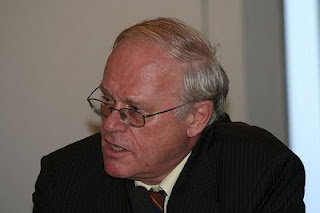 “The input of the security sector is indispensable for finding the balance” between mitigation and adaptation efforts to combat climate change, said Wouter Veening, co-founder and chairman of the Institute for Environmental Security, based in The Hague, Netherlands. Veening was the first among many speakers in a linked set of panels entitled “Environment and Security Challenges for Change” here at the World Conservation Congress in Barcelona.
“The input of the security sector is indispensable for finding the balance” between mitigation and adaptation efforts to combat climate change, said Wouter Veening, co-founder and chairman of the Institute for Environmental Security, based in The Hague, Netherlands. Veening was the first among many speakers in a linked set of panels entitled “Environment and Security Challenges for Change” here at the World Conservation Congress in Barcelona. -
Dispatches From the World Conservation Congress: John Pielemeier
›October 7, 2008 // By John Pielemeier This has been quite an interesting first day at the World Conservation Congress Forum in Barcelona. Since I’m not a conservation expert (I’m here to participate on a panel on population, health, and environment programs), I’m enjoying the opportunity to view the conference a bit like an anthropologist. Here are a few observations from Day One:
This has been quite an interesting first day at the World Conservation Congress Forum in Barcelona. Since I’m not a conservation expert (I’m here to participate on a panel on population, health, and environment programs), I’m enjoying the opportunity to view the conference a bit like an anthropologist. Here are a few observations from Day One:
The conference has an interesting structure. In an effort to provide some organization for such a large conference (8,000 participants and 800 panels/events) there are three main “streams,” including “Healthy Environments, Healthy People”—the reason our panel was accepted—along with “A New Climate for Change” and “Safeguarding the Diversity of Life.” The participants are also encouraged to join one of 12 “journeys” (e.g., “Forests Journey,” “Species Journey”) to help bring them together for smaller meetings and social events. I found that I couldn’t get into the Forests Happy Hour this evening because I hadn’t signed up for the “Journey.” Some incentives do matter—if only I had known!
Despite the “healthy” headlines, very few panels discuss the relationships between human or animal health and the environment, and there are no health-related “journeys.” The one bright spot regarding interdisciplinary linkages thus far was an announcement by the Australian national parks director that he would host a major “Healthy Parks, Healthy People” meeting in 2010 where 50 percent of the attendees would be health professionals.
Some sessions are held in the Knowledge Café, a large room where folks join one of 12 round conversation tables based on special topics. The United Nations has funded a special program, called “Poble,” which has brought a significant number of indigenous people, in tribal headgear and colorful traditional dress, to the conference. The Poble meetings are in a large room with a low stage and no chairs; attendees sit or lie on the floor while listening to the presentations of their colleagues. The room has been full every time I have peered in.
Attendance seems to vary considerably among sessions. A Knowledge Café roundtable meeting on climate change attracted mid-career pros from the Global Environment Facility, the European Union, the United Nations, and scientific organizations, and the level of the unmoderated discussion was extremely high. Participants were well-informed about the issues facing the international community over the next few months, and were also familiar with the latest ideas regarding how to address climate change. On the other hand, a panel session on accountability in conservation programs and among environmental NGOs attracted only nine attendees who listened to four (good!) speakers. After tomorrow’s sessions, I’ll have an even better sense of which themes are attracting the attention of the conservation professionals here.
John Pielemeier is an international development consultant. During his 22-year career at the U.S. Agency for International Development (USAID), he served as USAID mission director in Brazil, USAID/Washington office director for South Asia, and as a special assistant in the office of the USAID administrator.
Photo courtesy of Heidi Fancher and the Woodrow Wilson Center.
 A Publication of the Stimson Center.
A Publication of the Stimson Center.

 Gladys Kalema-Zikusoka is founder and CEO of
Gladys Kalema-Zikusoka is founder and CEO of  When I tell people I have been working on a report about U.S. international water policy, they usually respond with the same sardonic question: “The United States has an international water policy?” The answer, of course, is complicated. Yes, we have localized approaches to water challenges in parts of the developing world, and we have
When I tell people I have been working on a report about U.S. international water policy, they usually respond with the same sardonic question: “The United States has an international water policy?” The answer, of course, is complicated. Yes, we have localized approaches to water challenges in parts of the developing world, and we have 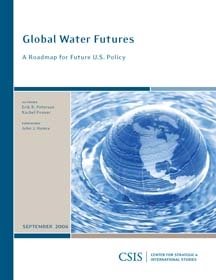 Studies’ (CSIS)
Studies’ (CSIS)  I’ve been busy the last several days attending the “Healthy Environments—Healthy People” stream of the
I’ve been busy the last several days attending the “Healthy Environments—Healthy People” stream of the 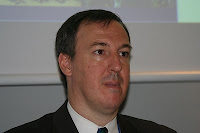 The lawyers are out at the
The lawyers are out at the 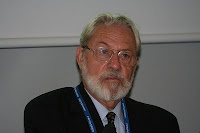 Michael Bothe, an expert on the environment and laws of war from Goethe University in Frankfurt, Germany, suggested
Michael Bothe, an expert on the environment and laws of war from Goethe University in Frankfurt, Germany, suggested 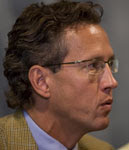 “Frequently, we forget that environmental management is all about institutions and governance, and the decisions and trade-offs that we make,” said the University of Washington’s
“Frequently, we forget that environmental management is all about institutions and governance, and the decisions and trade-offs that we make,” said the University of Washington’s 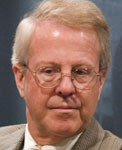 This has been quite an interesting first day at the
This has been quite an interesting first day at the 

